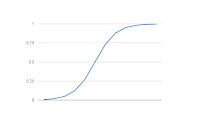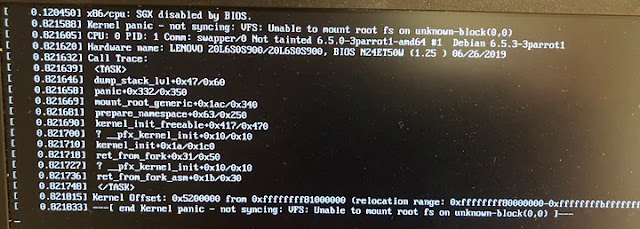A FORMAL INTRO TO MACHINE LEARNING USING LOGISTIC REGRESSION FROM SCRATCH
how it does that?...well that's math!! for you...yes, literally it figure it out using mathematics. What kind of it??? well for starters if you ever had any math class in your university or school...that'll do! Ok that being said we gonna learn little bit of ML(machine learning). especially the one called supervised learning.
Supervised Learning : is a kind of method telling the computer what to do whether than how to do..in technical term we call it as specifying "LABELS" for prediction...
Say we have a data on a phone parts like camera, storage, ram, 5G or 4G, brand (apple, Samsung, etc..) and their prices. we need to predict the price of a new phone based on specs from our previous data on specs and brand.here the features(camera, storage, ram, 5G or 4G, brand (apple, Samsung, etc..) and the Target(Prices).
The logic regression(LOGISTIC REGRESSION) is kind of algorithm in machine learning called Regression problem. First we need data....i'm using MNIST data in this data we need to split data into training and test(80% to train and 20% to test). The mnist is data set of hand written images from 0 to 9 in csv format of pixel data of 28*28 images. More about mnist link. so total 784 input data for Nueral Network here.


import pandas as pd
import matplotlib.pyplot as plt
import numpy as np
data = pd.read_csv('mnist.csv')
data = np.array(data)
m, n = data.shape
np.random.shuffle(data)
#making the data on data_dev and transposing it for easy access
data_dev = data[0:6000].T
#making all labels stored as y for calculations
Y_dev = data_dev[0]
#making all X data stored for calculations
X_dev = data_dev[1:n]
#diving with 255 makes numbers as 0 to 1 inbetween values
X_dev = X_dev / 255.
data_train = data[6000:m].T
Y_train = data_train[0]
X_train = data_train[1:n]
X_train = X_train / 255.
_,m_train = X_train.shape
#for making the weights and baises values
def init_params():
W1 = np.random.rand(10, 784) - 0.5
b1 = np.random.rand(10, 1) - 0.5
W2 = np.random.rand(10, 10) - 0.5
b2 = np.random.rand(10, 1) - 0.5
return W1, b1, W2, b2
def ReLU(Z):
return np.maximum(Z, 0)
def softmax(Z):
A = np.exp(Z) / sum(np.exp(Z))
return A
def forward_prop(W1, b1, W2, b2, X):
Z1 = W1.dot(X) + b1
A1 = ReLU(Z1)
Z2 = W2.dot(A1) + b2
A2 = softmax(Z2)
return Z1, A1, Z2, A2
def ReLU_deriv(Z):
return Z > 0
def one_hot(Y):
#fancy way of saying make matrix of 784,10
one_hot_Y = np.zeros((Y.size, Y.max() + 1))
#fancy way of saying 0:5999, y value
one_hot_Y[np.arange(Y.size), Y] = 1
one_hot_Y = one_hot_Y.T
return one_hot_Y
def backward_prop(Z1, A1, Z2, A2, W1, W2, X, Y):
one_hot_Y = one_hot(Y)
dZ2 = A2 - one_hot_Y
dW2 = 1 / m * dZ2.dot(A1.T)
db2 = 1 / m * np.sum(dZ2)
dZ1 = W2.T.dot(dZ2) * ReLU_deriv(Z1)
dW1 = 1 / m * dZ1.dot(X.T)
db1 = 1 / m * np.sum(dZ1)
return dW1, db1, dW2, db2
def update_params(W1, b1, W2, b2, dW1, db1, dW2, db2, alpha):
W1 = W1 - alpha * dW1
b1 = b1 - alpha * db1
W2 = W2 - alpha * dW2
b2 = b2 - alpha * db2
return W1, b1, W2, b2
def get_predictions(A2):
return np.argmax(A2, 0)
def get_accuracy(predictions, Y):
print(predictions, Y)
return np.sum(predictions == Y) / Y.size
def gradient_descent(X, Y, alpha, iterations):
W1, b1, W2, b2 = init_params()
for i in range(iterations):
Z1, A1, Z2, A2 = forward_prop(W1, b1, W2, b2, X)
dW1, db1, dW2, db2 = backward_prop(Z1, A1, Z2, A2, W1, W2, X, Y)
W1, b1, W2, b2 = update_params(W1, b1, W2, b2, dW1, db1, dW2, db2, alpha)
if i % 10 == 0:
print("Iteration: ", i)
predictions = get_predictions(A2)
print(get_accuracy(predictions, Y))
return W1, b1, W2, b2
W1, b1, W2, b2 = gradient_descent(X_train, Y_train, 0.10, 500)
def make_predictions(X, W1, b1, W2, b2):
_, _, _, A2 = forward_prop(W1, b1, W2, b2, X)
predictions = get_predictions(A2)
return predictions
def test_prediction(index, W1, b1, W2, b2):
current_image = X_train[:, index, None]
prediction = make_predictions(X_train[:, index, None], W1, b1, W2, b2)
label = Y_train[index]
print("Prediction: ", prediction)
print("Label: ", label)
current_image = current_image.reshape((28, 28)) * 255
plt.gray()
plt.imshow(current_image, interpolation='nearest')
plt.show()
test_prediction(0, W1, b1, W2, b2)
test_prediction(1, W1, b1, W2, b2)
test_prediction(2, W1, b1, W2, b2)
test_prediction(3, W1, b1, W2, b2)
Iteration: 0
[3 1 1 ... 1 1 3] [2 8 8 ... 5 6 0]
0.12961111111111112
Iteration: 10
[7 4 6 ... 2 0 7] [2 8 8 ... 5 6 0]
0.1825
Iteration: 20
[7 4 6 ... 5 0 7] [2 8 8 ... 5 6 0]
0.24507407407407408
Iteration: 30
[7 4 6 ... 8 1 7] [2 8 8 ... 5 6 0]
0.3013888888888889
Iteration: 40
[0 2 3 ... 8 1 0] [2 8 8 ... 5 6 0]
0.3474814814814815
Iteration: 50
[0 2 3 ... 8 1 0] [2 8 8 ... 5 6 0]
0.3875925925925926
Iteration: 60
[0 2 3 ... 8 1 0] [2 8 8 ... 5 6 0]
0.43164814814814817
Iteration: 70
[0 2 3 ... 8 1 0] [2 8 8 ... 5 6 0]
0.4744259259259259
Iteration: 80
[0 2 3 ... 8 1 0] [2 8 8 ... 5 6 0]
0.5147037037037037
Iteration: 90
[0 2 3 ... 5 1 0] [2 8 8 ... 5 6 0]
0.5485
Iteration: 100
[0 2 3 ... 5 1 0] [2 8 8 ... 5 6 0]
0.5779814814814814
Iteration: 110
[0 2 3 ... 5 1 0] [2 8 8 ... 5 6 0]
0.6021851851851852
Iteration: 120
[0 2 3 ... 5 6 0] [2 8 8 ... 5 6 0]
0.6239074074074074
Iteration: 130
[0 2 3 ... 5 6 0] [2 8 8 ... 5 6 0]
0.6423333333333333
Iteration: 140
[0 2 3 ... 5 6 0] [2 8 8 ... 5 6 0]
0.6590185185185186
Iteration: 150
[0 2 3 ... 5 6 0] [2 8 8 ... 5 6 0]
0.6735
Iteration: 160
[0 2 3 ... 5 6 0] [2 8 8 ... 5 6 0]
0.6866481481481481
Iteration: 170
[0 2 3 ... 5 6 0] [2 8 8 ... 5 6 0]
0.6987592592592593
Iteration: 180
[0 4 3 ... 5 6 0] [2 8 8 ... 5 6 0]
0.7098518518518518
Iteration: 190
[0 4 3 ... 5 6 0] [2 8 8 ... 5 6 0]
0.7205555555555555
Iteration: 200
[0 4 3 ... 5 6 0] [2 8 8 ... 5 6 0]
0.729037037037037
Iteration: 210
[0 4 3 ... 5 6 0] [2 8 8 ... 5 6 0]
0.7376111111111111
Iteration: 220
[2 4 3 ... 5 6 0] [2 8 8 ... 5 6 0]
0.7456851851851852
Iteration: 230
[2 4 3 ... 5 6 0] [2 8 8 ... 5 6 0]
0.753
Iteration: 240
[2 4 3 ... 5 6 0] [2 8 8 ... 5 6 0]
0.7595555555555555
Iteration: 250
[2 4 8 ... 5 6 0] [2 8 8 ... 5 6 0]
0.765962962962963
Iteration: 260
[2 4 8 ... 5 6 0] [2 8 8 ... 5 6 0]
0.771537037037037
Iteration: 270
[2 4 8 ... 5 6 0] [2 8 8 ... 5 6 0]
0.7766851851851851
Iteration: 280
[2 4 8 ... 5 6 0] [2 8 8 ... 5 6 0]
0.7813333333333333
Iteration: 290
[2 4 8 ... 5 6 0] [2 8 8 ... 5 6 0]
0.7853518518518519
Iteration: 300
[2 4 8 ... 5 6 0] [2 8 8 ... 5 6 0]
0.7896851851851852
Iteration: 310
[2 8 8 ... 5 6 0] [2 8 8 ... 5 6 0]
0.7942407407407407
Iteration: 320
[2 8 8 ... 5 6 0] [2 8 8 ... 5 6 0]
0.7982407407407407
Iteration: 330
[2 8 8 ... 5 6 0] [2 8 8 ... 5 6 0]
0.8014074074074075
Iteration: 340
[2 8 8 ... 5 6 0] [2 8 8 ... 5 6 0]
0.8048518518518518
Iteration: 350
[2 8 8 ... 5 6 0] [2 8 8 ... 5 6 0]
0.8079259259259259
Iteration: 360
[2 8 8 ... 5 6 0] [2 8 8 ... 5 6 0]
0.8107222222222222
Iteration: 370
[2 8 8 ... 5 6 0] [2 8 8 ... 5 6 0]
0.8132777777777778
Iteration: 380
[2 8 8 ... 5 6 0] [2 8 8 ... 5 6 0]
0.8157037037037037
Iteration: 390
[2 8 8 ... 5 6 0] [2 8 8 ... 5 6 0]
0.8181296296296297
Iteration: 400
[2 8 8 ... 5 6 0] [2 8 8 ... 5 6 0]
0.8203518518518519
Iteration: 410
[2 8 8 ... 5 6 0] [2 8 8 ... 5 6 0]
0.8231666666666667
Iteration: 420
[2 8 8 ... 5 6 0] [2 8 8 ... 5 6 0]
0.8256481481481481
Iteration: 430
[2 8 8 ... 5 6 0] [2 8 8 ... 5 6 0]
0.827962962962963
Iteration: 440
[2 8 8 ... 5 6 0] [2 8 8 ... 5 6 0]
0.8297777777777777
Iteration: 450
[2 8 8 ... 5 6 0] [2 8 8 ... 5 6 0]
0.8318703703703704
Iteration: 460
[2 8 8 ... 5 6 0] [2 8 8 ... 5 6 0]
0.833462962962963
Iteration: 470
[2 8 8 ... 5 6 0] [2 8 8 ... 5 6 0]
0.8345925925925926
Iteration: 480
[2 8 8 ... 5 6 0] [2 8 8 ... 5 6 0]
0.8363518518518519
Iteration: 490
[2 8 8 ... 5 6 0] [2 8 8 ... 5 6 0]
0.8379444444444445
Prediction: [2]
Label: 2
Prediction: [8]
Label: 8
Prediction: [8]
Label: 8
Prediction: [4]
Label: 4
[Finished in 161.4s]





Comments
Post a Comment